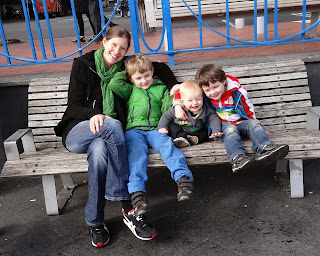My kids inspire me.
The other day I sat down at the kitchen
table to work on my storyboard for Little Jack Thomson and his Magnificent Brain. I wouldn’t normally do this while my kids are home because they are
usually far too distracting, want food or drink, or need emergency services
from me like band-aids, cuddles, or mediation. However, I had some really great
ideas I wanted to get down on paper right away and I had one child away at a
birthday party, so I decided to give it a try.
Within a few minutes, my four year old wanted to draw, too.
So, I stopped what I was doing and got a piece of paper and some markers and
sat him next to me. Then my seven year old wanted to draw. Soon, we were all
drawing together quietly at the table. Yes, quietly. And, everyone was concentrating on their picture and we were all in the flow. It was total bliss.
After we drew for awhile, though, I was the one distracted. When did my four year old
learn to draw such dramatic trees and use such pencil strokes? It is such a great feeling when you see your child has made a leap in their development whether it's physically, mentally, or artistically. I loved his fantasy! The tree
was getting hit by lightning which was coming from inside the house. The
tractor had run into the tree. My son shared his story with me about everything
in his picture and I listened like a child hearing a bedtime story.
 I asked my children then to look at my storyboard and tell
me what they see. It was wonderful to hear my children give praise and critique
of my pictures and reminded me that their opinions were more precious than any I
would receive elsewhere. Not only are children brutally (and tenderly) honest but they also see things
differently. As an illustrator it is important to be able to see through a
child’s eyes. I am lucky to have small children around me who inspire me to see
what they see and feel what they feel and I am sure my illustrations will be better because of them.
I asked my children then to look at my storyboard and tell
me what they see. It was wonderful to hear my children give praise and critique
of my pictures and reminded me that their opinions were more precious than any I
would receive elsewhere. Not only are children brutally (and tenderly) honest but they also see things
differently. As an illustrator it is important to be able to see through a
child’s eyes. I am lucky to have small children around me who inspire me to see
what they see and feel what they feel and I am sure my illustrations will be better because of them.















